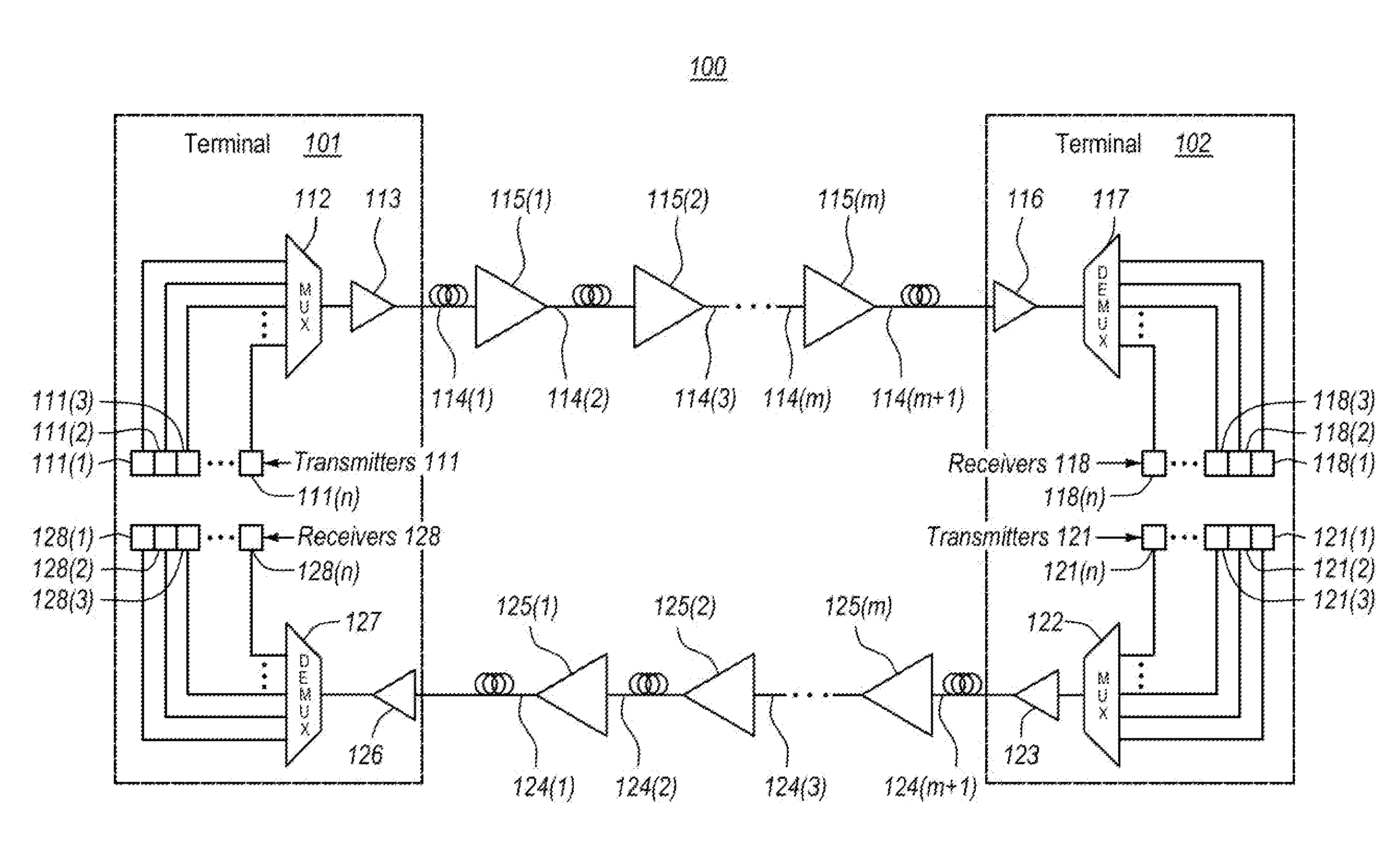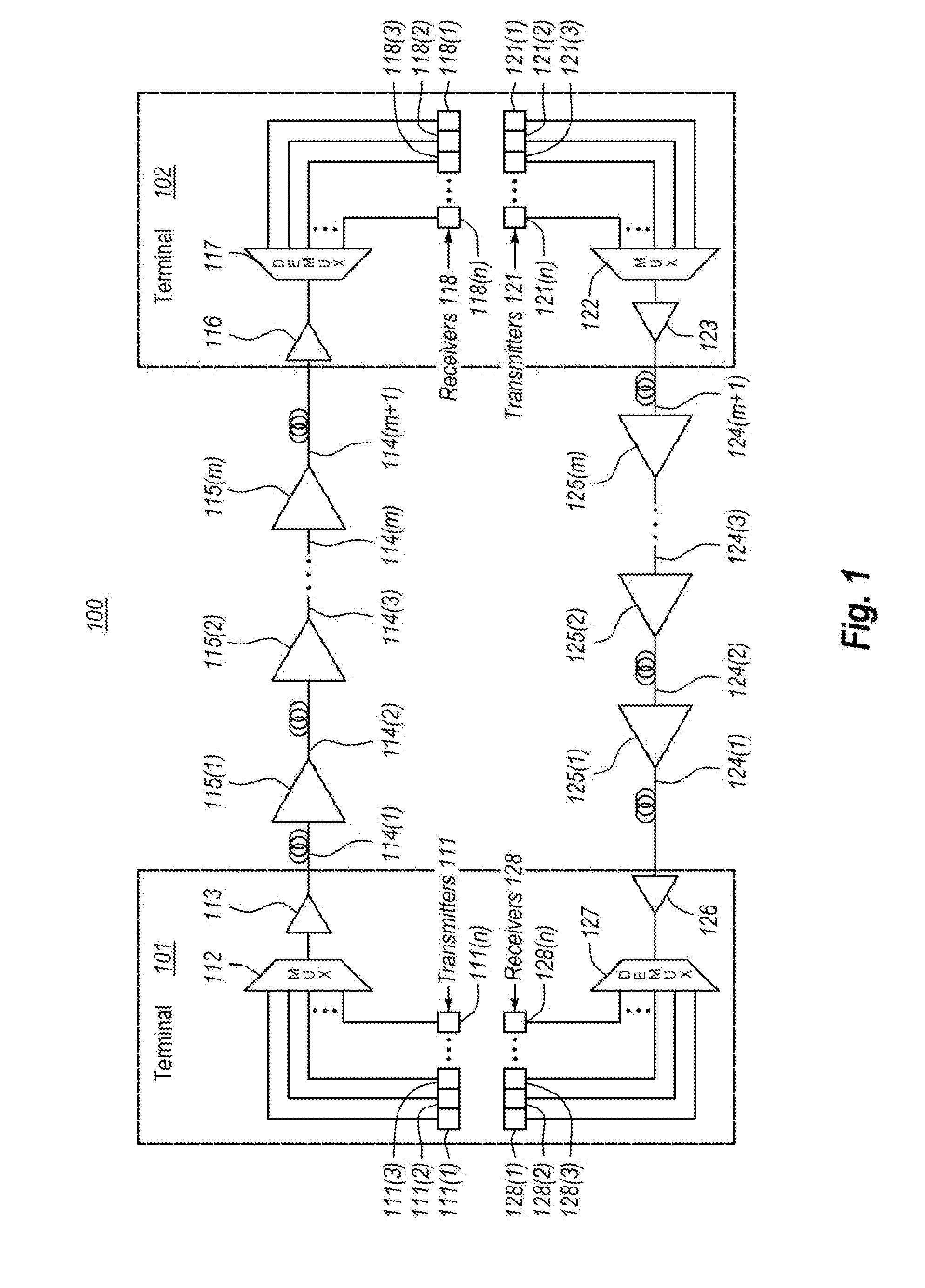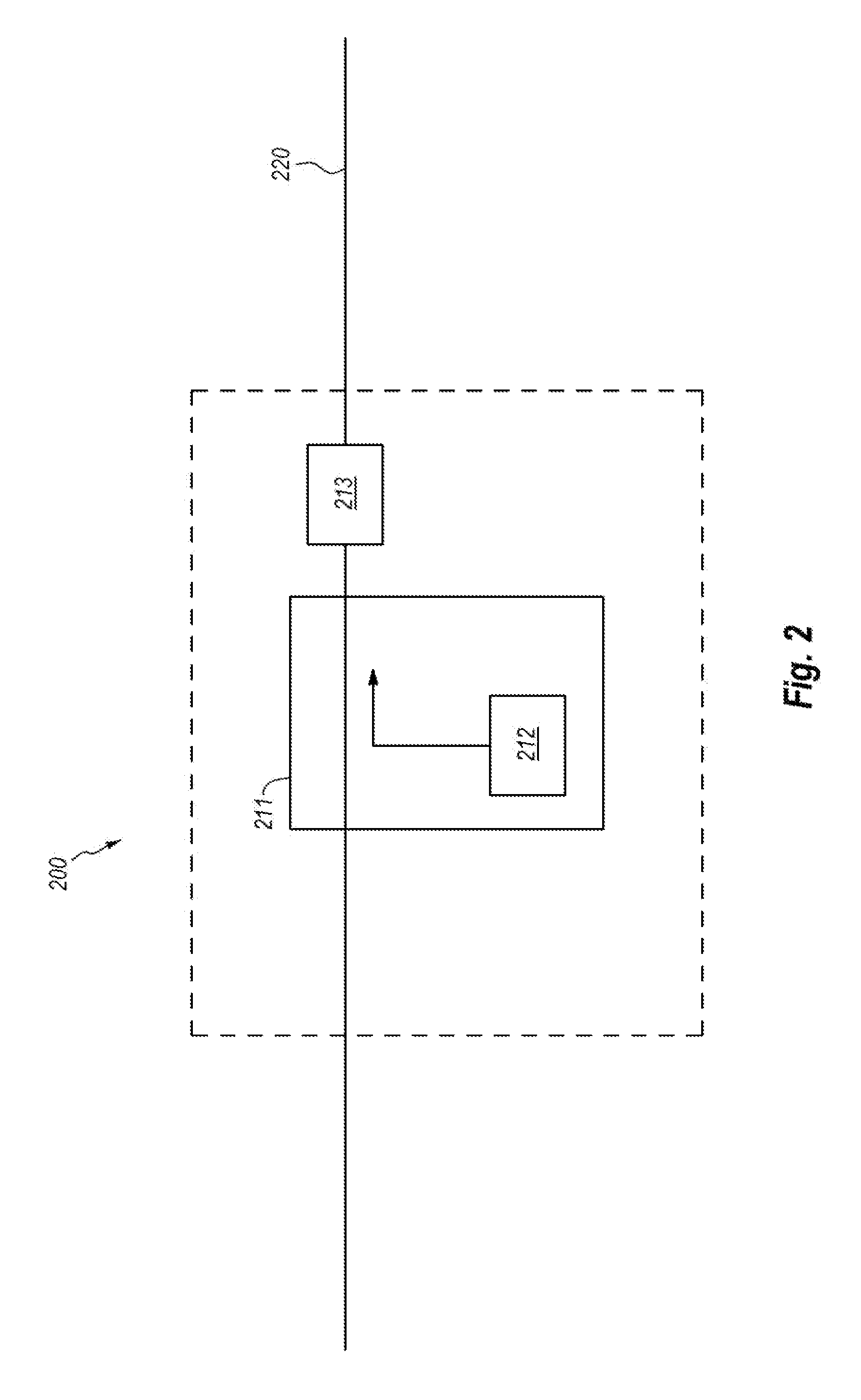Repeater otdr using repeater based raman pumps
a repeater and raman technology, applied in transmission monitoring, transmission monitoring/testing/fault-measurement systems, electrical equipment, etc., can solve the problems of enormous technical challenges of optical signals over such long distances using wdm or dwdm, and the less relevant of geographical location
- Summary
- Abstract
- Description
- Claims
- Application Information
AI Technical Summary
Benefits of technology
Problems solved by technology
Method used
Image
Examples
Embodiment Construction
[0017]In accordance with embodiments described herein, a submarine optical amplifier assembly comprising an optical fiber fault detection module is described. The assembly can include an optically pumped amplifier that amplifies optical signals in a signal path. A sensor can be disposed within the fiber fault detection module. The sensor can analyze an optical signal at the amplifier assembly. The analyzed optical signal can provide information relating to the presence and location of a fault within the optical fiber.
[0018]A method for remote cable fault location can be beneficial in a Long haul optical transmission system in order to facilitate a repair. Conventionally, schemes have been based on remote measurement of light levels using telemetry, or cable end voltages in order to locate a fault. Such methods are somewhat limited to a resolution on the order of a cable span (40-80 km). By implanting an OTDR (optical time domain reflectometry) scheme within a repeater, the resolutio...
PUM
 Login to View More
Login to View More Abstract
Description
Claims
Application Information
 Login to View More
Login to View More - R&D
- Intellectual Property
- Life Sciences
- Materials
- Tech Scout
- Unparalleled Data Quality
- Higher Quality Content
- 60% Fewer Hallucinations
Browse by: Latest US Patents, China's latest patents, Technical Efficacy Thesaurus, Application Domain, Technology Topic, Popular Technical Reports.
© 2025 PatSnap. All rights reserved.Legal|Privacy policy|Modern Slavery Act Transparency Statement|Sitemap|About US| Contact US: help@patsnap.com



